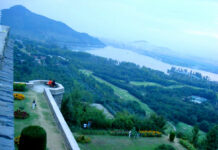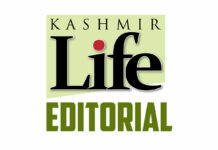Narinder Nath Vohra is one of the few governors of Jammu and Kashmir who is fairly popular with the state’s political class. He is also one of the few people in Delhi who knows Kashmir fairly better. Now one of the longest serving governor’s – he was appointed by Congress, was retained by the BJP and is considered a personal choice of the Prime Minister Narendra Modi, Vohra landed at Srinagar airport at a time when his predecessor’s questionable decision-making had literally put Kashmir on fire.
Vohra’s earlier assignment as the interlocutor had helped him understand the basics of the crisis that Kashmir sees in its routine issues and the issue itself. He understands well the sacred and profane in Kashmir’s politics and society. What is more important, he knows almost every small and big fish in Kashmir’s turmoil hit landscape. This understanding has given him an unmatched knowledge to decide and suggest.
It was this very understanding that made all his earlier rules comfortably acceptable to everybody, unlike many of his predecessors especially Jagmohan and Lt Gen (retd) S K Sinha. He presided over the electoral process in 2008, then again in 2014 when PDP took its time in inking the ill-fated deal with BJP, and a year after in 2015 he was at the helm of affairs again after Mufti’s demise that eventually paved way for his daughter’s takeover. Now it is his fourth, and expectedly the longest spell of rule in wake of collapse of the BJPDP alliance.
This time, however, he took a decision that he earlier avoided in 2008. He skipped visiting the Martyrs’ Cemetery on July 13, the anniversary of one of the worst massacres in twentieth century Kashmir presided over by a despot, Hari Singh. This day is fundamental to Kashmir’s contested narrative and it is this landmark event that is not disputed in the state’s political dichotomy.
It is so important to the contemporary history that after Dr Farooq Abdullah regained power in 1996, Hari Singh’s grandson – a member in his cabinet – would religiously pay his respects to the slain at the martyrs’ cemetery. Now, governor chose to become the first ruler of the state to avoid a customary attendance on this day. It is the first such case post-1947.
Reports appearing in media suggest that the decision was outcome of the pressures from the rightwing parties who objected to his tweet on the eve of Martyrs Day. “Jammu and Kashmir has been known for its glorious pluralistic ethos, amity and brotherhood,” Vohra has tweeted on the eve of the event. “On the occasion of Martyr’s Day, I appeal to the people to work towards restoring the pristine glory of the State as an abode of peace, harmony and prosperity.”
Reports said he had scheduled his visit early in the morning. It was changed later in the night. That was perhaps why Omar tweeted: “After Governor Vohra’s inability to attend it is unfortunate that none of his advisors have seen it fit to be present. It’s been downgraded to the level of Div Com where normally the CM leads the function.”
BJP that was part of the ruling alliance till June had taken a stand against the Martyrs’ Day. Pro-despot, the party had been rallying for a state holiday on Hari Singh death anniversary. Its ministers in Mufti and later in Mehbooba’s cabinet would avoid visiting the Martyrs Cemetery.









